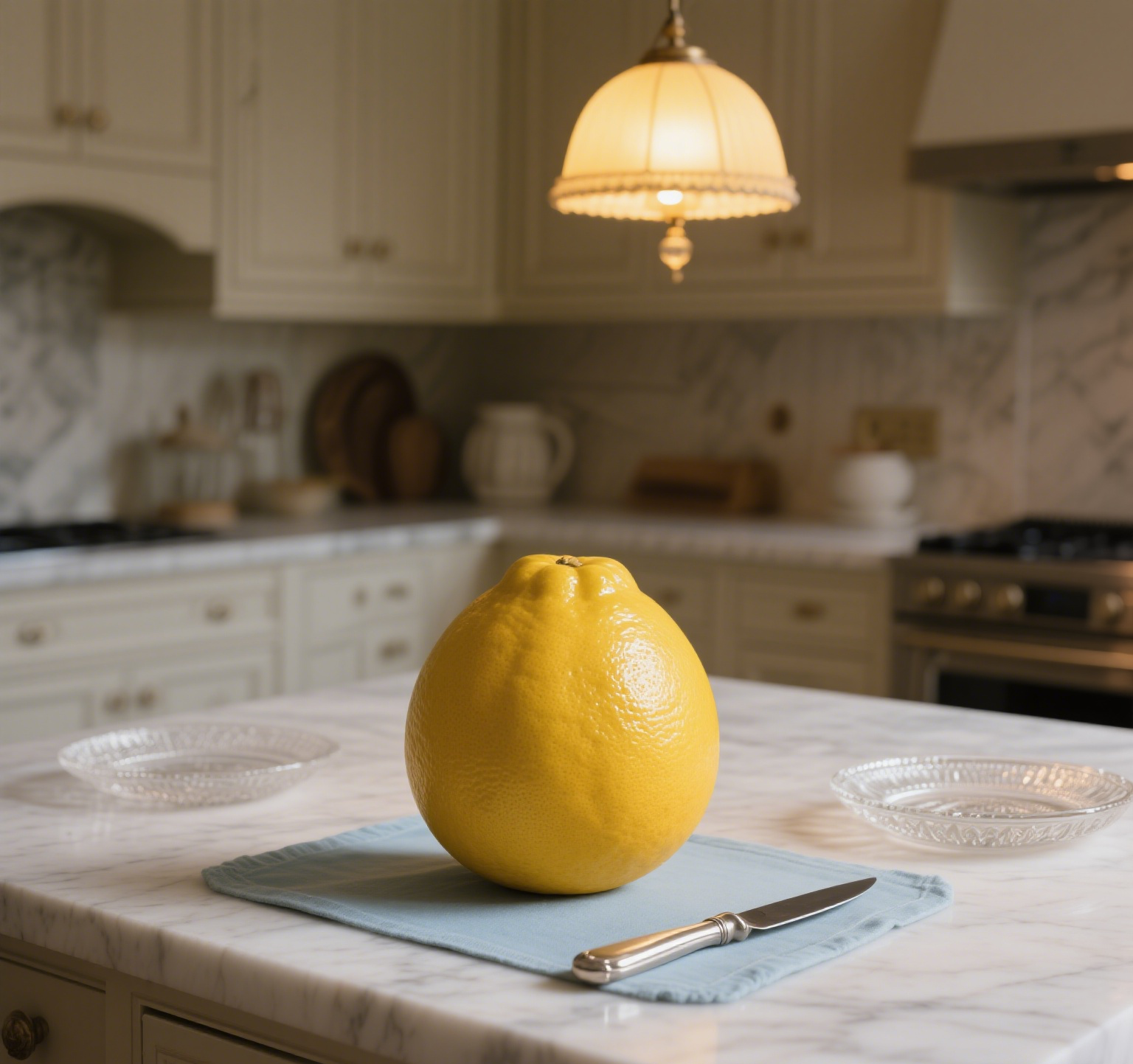Physical Address
304 North Cardinal St.
Dorchester Center, MA 02124
Physical Address
304 North Cardinal St.
Dorchester Center, MA 02124
Spoiler: It’s the Citrus Family’s Quirky Grandparent
Let’s slice straight to the juicy truth: Yes, citrons are edible—but eating one raw is like trying to snack on a Chanel No. 5 perfume bottle. This knobby, thick-rinded citrus is the eccentric ancestor of your grocery store lemons and oranges, prized for its fragrant peel and stubborn refusal to play by modern fruit rules. If citrus fruits had a family reunion, citrons would be the elderly relative telling stories about Mesopotamia while handing out homemade candied rind.

Citrons are the O.G. of the citrus world—the first cultivated citrus fruit, dating back to 4,000 BCE. Ancient Persians used them as medicine, Jewish traditions feature citrons (called etrog) in Sukkot rituals, and Roman elites carried them as status symbols (the original flex before iPhones).
Fun Fact:
Citron trees are divas—they’ll only thrive in Mediterranean-like climates. Attempt to grow one in Minnesota, and it’ll wither faster than your New Year’s resolution to quit coffee.
Citrons are the “read the fine print” of edibility. Here’s their flavor résumé:
Golden Rule:
“Treat citrons like a pineapple’s artsy cousin—admire its beauty, then ruthlessly exploit the parts that taste good.”
The Ultimate Flavor Bomb
Citron zest adds perfume-like complexity to baked goods, marinades, and sauces. A single teaspoon can elevate rice pudding from “meh” to “more, please!”
DIY Gourmet Candy Factory
Candied citron peel is the secret weapon of fruitcakes and panettone. Bonus: Your kitchen will smell like a Sicilian bakery for days.
Mixologist’s Secret Weapon
Muddle citron zest in cocktails for instant sophistication. Pair with gin and rosemary, and suddenly you’re the Don Draper of home bartending.
Preservation Prodigy
Before refrigerators, people preserved citrons in honey or salt. Try it with salmon gravlax—it’s like edible history with a side of hipster cred.
Natural Air Freshener
Simmer citron slices with cloves and cinnamon. Your home will smell like a Renaissance palace (minus the plague).
Pro Tip:
Rub citron peel on wooden cutting boards to disinfect and scent them. Take that, chemical cleaners!
Storage Hack:
Whole citrons last months at room temperature—they’re basically the fruit version of a Twinkie.
Zest First, Ask Questions Later
Use a microplane to harvest zest before cutting. Freeze extras in ice cube trays with olive oil—future you will send thank-you notes.
Pith Patrol
Boil thick white pith in 3 changes of water to remove bitterness, then candy it. It’s like turning cardboard into gold.
Juice? Don’t Bother
The meager juice tastes like sour regret. Use lemon juice instead and pretend you’re being historically accurate.
Wisdom Nugget:
“Citrons teach us that beauty isn’t skin-deep—it’s zest-deep.”
Lazy Person’s Candied Peel
Simmer sliced peel in sugar water until translucent. Roll in chocolate or dip in dark coffee—cheaper than therapy.
Citron Salt
Mix zest with coarse salt. Sprinkle on roasted veggies or margarita glasses. Instant fancy.
“Cheater’s” Marmalade
Simmer diced peel with oranges, sugar, and water. Call it “Artisanal Ancient Citrus Spread” and charge $8/jar.
Citrons have outlived empires, survived globalization, and still land on modern brunch menus. They remind us that “edible” isn’t just about devouring—it’s about transforming. Whether you’re zesting, candying, or infusing, citrons reward creativity like no other fruit.
Final Zinger:
“Citrons are the phoenix of citrus—too weird to eat, too glorious to ignore. #ZestIsMore”
Now go forth and make that 4,000-year-old fruit earn its keep. Your ancestors (and your Instagram feed) are watching.